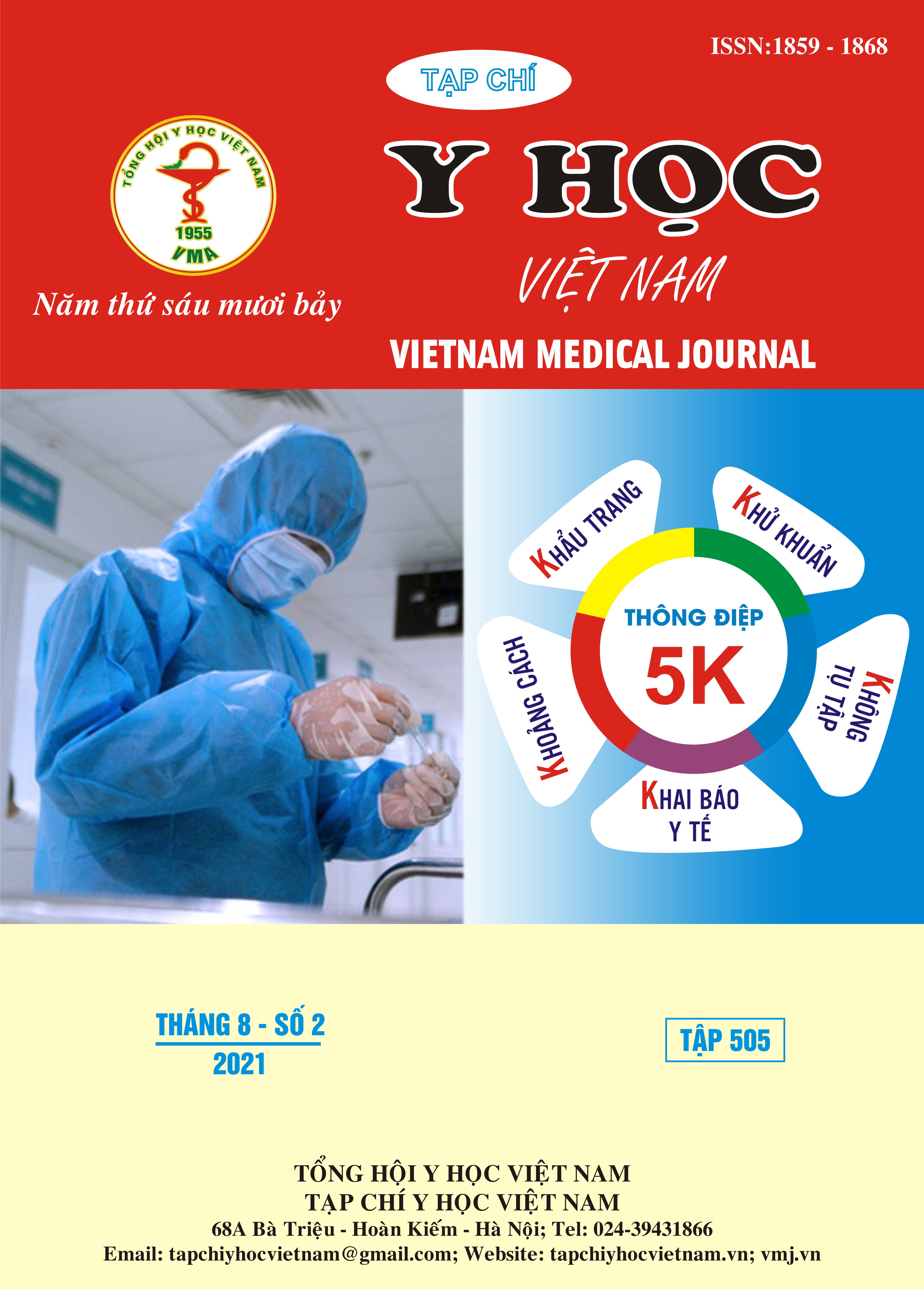CLINICAL CHARACTERISTICS AND QUALITY OF LIFE IN AKINETIC-RIGID OF PARKINSON’S DISEASE
Main Article Content
Abstract
Objective: Describe clinical characteristics and quality of life (Quality of Life - QoL) in Akinetic-rigid (AR) subtype of Parkinson's disease. Subjects and Methods: Cross-sectional descriptive study on 60 patients with AR subtype of Parkinson disease at the National Geriatric Hospital from August 2020 to June 2021, diagnosed with Parkinson's disease according to the criteria of the UK Parkinson's Disease Society Brain Bank (UKPDSBB/United Kingdom Parkinson's Disease Society Brain Bank), Akinetic-rigid (AR) subtype according to the Parkinson's Disease Assessment Scale (UPDRS), assess the quality of life of patients according to the Parkinson's Quality of Life Scale PDQ-39. Results: The average age of the study subjects was 68.3±8, the ratio of men and women were 56,7% and 43,4%. The most common mortor onset symtom was bradykinesia (93,3%), the most comnon non-motor onset were shoulder pain (56,7%) and sleep disorders (43,3%). Research subjects in phase III accounted for the highest rate of 40%. Quality of life in AR subtype of Parkinson disease in Mobiliy and Activities of daily living (ADL) was most affected with the mean score according to PDQ-39 (46,0±30,0 và 49,4±30,5). In the study, the group of patients in moderate-severe stage (stage III, IV, V) or group with disease duration of more than 5 years or patients with over 60 years old all had worse quality of life compared with other groups. These differencesare statistically significant with p<0.05. Conclusion: The quality of life of AR patients with Parkinson's disease is greatly affected, so it’s necessary for comprehensive care and attention from the medical team and family.
Article Details
Keywords
Parkinson’s disease, akinetic-rigid subtype, quality of life
References
2. Choi SM, Kim BC, Cho BH, et al. Comparison of two motor subtype classifications in de novo Parkinson's disease. Parkinsonism Relat Disord. Sep 2018;54:74-78. doi:10.1016/j.parkreldis.2018.04.021
3. Lê Đức Hinh. Bệnh Parkinson. Nhà xuất bản Y học; 2008.
4. Lê Quang Cường. Bệnh và hội chứng Parkinson. Nhà xuất bản Y học; 2002.
5. Shalash AS, Hamid E, Elrassas H, et al. Non-motor symptoms in essential tremor, akinetic rigid and tremor-dominant subtypes of Parkinson's disease. PLoS One. 2021;16(1):e0245918. doi:10.1371/ journal.pone.0245918
6. Rajput AH, Voll A, Rajput ML, Robinson CA, Rajput A. Course in Parkinson disease subtypes: A 39-year clinicopathologic study. Neurology. Jul 21 2009;73(3):206-12. doi:10.1212/ WNL.0b013e3181ae7af1
7. Jenner P. Treatment of the later stages of Parkinson's disease - pharmacological approaches now and in the future. Transl Neurodegener. 2015;4:3. doi:10.1186/2047-9158-4-3
8. Jenkinson C, Heffernan C, Doll H, Fitzpatrick R. The Parkinson's Disease Questionnaire (PDQ-39): evidence for a method of imputing missing data. Age Ageing. Sep 2006;35(5):497-502. doi:10.1093/ageing/afl055
9. Schrag A, Jahanshahi M, Quinn N. What contributes to quality of life in patients with Parkinson's disease? J Neurol Neurosurg Psychiatry. Sep 2000;69(3):308-12. doi:10.1136/ jnnp.69.3.308


